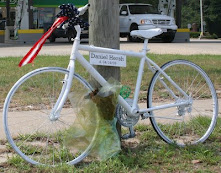The street crossing experience comes down to the behavior of the pedestrian and the motorist as well as the design of the intersection or crossing. The behavior of motorists (whether, and how, they stop for a pedestrian) is influenced by a variety of factors, including the speed at which they are traveling. A motorist traveling at a slower rate of speed has more time to see, react, and stop for a pedestrian than someone who is going fast.The article includes several sections about how to improve roads:
- Improve crossing visibility
- More than a marked crosswalk may be needed
- Intersections with existing traffic signals
- Intersections with existing STOP signs
- Locations without traffic signals or STOP signs
- Improvements to Marked Crosswalks
- Mark crosswalks with highly reflective material
- Raise the crossing above street level
- Narrow the roadway
- Improving signs and/or lights or signals in advance, or above the crosswalk
- Install or improve traffic signals
About WalkingInfo.org:
The Pedestrian and Bicycle Information Center (PBIC) is a national clearinghouse for information about health and safety, engineering, advocacy, education, enforcement, access, and mobility for pedestrians (including transit users) and bicyclists. The PBIC serves anyone interested in pedestrian and bicycle issues, including planners, engineers, private citizens, advocates, educators, police enforcement, and the health community.The site is funded by the U.S. Department of Transportation Federal Highway Administration, FHWA.
We've put WalkingInfo.org in our list of Elsewhere links as it's a terrific resource to improve sharing the road safely.





